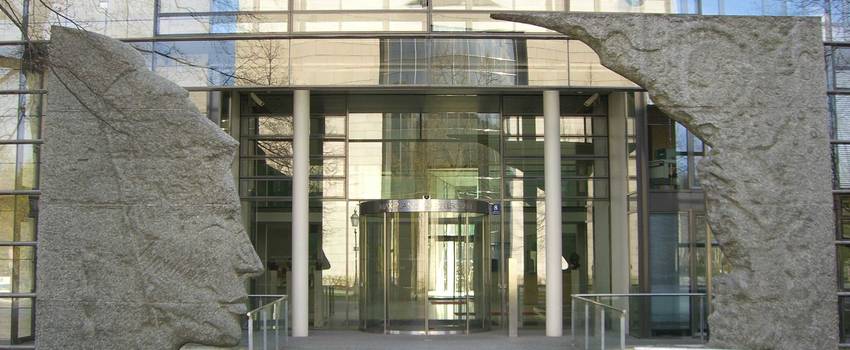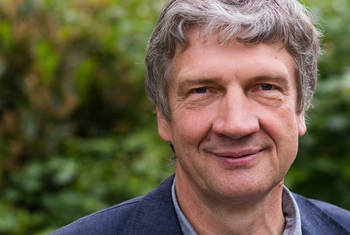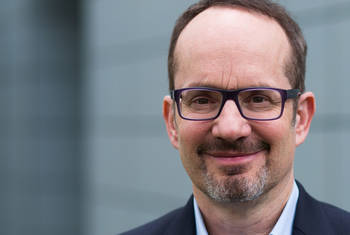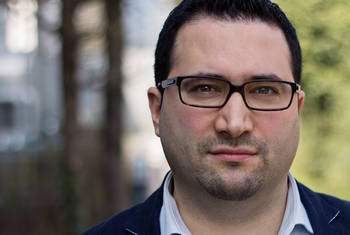Werner Kühlbrandt How Does the Molecular Machine That Drives Energy Conversion in the Cell Membrane Work?
Werner Kühlbrandt is Director and Scientific Member at the Max Planck Institute of Biophysics in Frankfurt and Associate Professor at the Johann Wolfgang Goethe University Frankfurt/Main. One of his research interests is the structure and mechanisms of membrane proteins, which is also the focus of his study group at the Department of Structural Biology at Max PIanck Institute. Kühlbrandt was a Heisenberg Fellow and is a member of the European Molecular Biology Organization and the German National Academy of Sciences Leopoldina.
Area of Research
Biophysics, Structural Biology
since 1997
2006-2013
Joint Director
DFG Cluster of Excellence “Macromolecular Complexes”
1994
Senior Scientist
EMBL Heidelberg, Germany
1988
Group Leader
EMBL Heidelberg, Germany
1987
Visiting Scientist
Lawrence Berkeley Laboratory, Berkeley, CA (Robert Glaeser)
1984
Research Associate
Imperial College, London, UK (David Blow, James Barber)
1981
Research Associate
ETH Zürich, Switzerland (Ernst Wehrli)
1981
PhD
MRC LMB Cambridge, UK (Nigel Unwin)
1977
Diploma in Chemistry
Free University of Berlin (Freie Universität Berlin)
Fellowships
- Israel Chemical Society (Honorary Member) (2009)
- German National Academy of Science Leopoldina (Elected Member) (2003)
- Visiting Professor, Biology Department, Imperial College, London, UK (2002)
- EMBO (Elected Member) (1992)
- Heisenberg Fellow of the German Science Foundation (DFG) (1986)
- EMBO Long Term Fellowship (1984)
- Hoffmann-LaRoche Research Fellowship (1981)
- PhD Fellowship, Deutscher Akademischer Austauschdienst (1977)
- German National Academic Foundation (“Studienstiftung des deutschen Volkes”) (1973)
- MPG International Max Planck Research School (2013-2018)
- DFG Research Group „Struktur und Funktion des peroxisomalen Translokons“ (PerTrans), Ruhr-Universität Bochum (2013-2016)
- DFG Cluster of Excellence “Macromolecular Complexes” (2012-2017)
- DFG SFB 807 “Transport and Signalling Across Biological Membranes” (-2016)
- EU FP7 EDICT (2008-2012)
- DFG Cluster of Excellence “Macromolecular Complexes” (2007-2012)
- MPG International Max Planck Research School (2000-2012)
 © Maximilian Dörrbecker
© Maximilian Dörrbecker
Max Planck Society
"The Max Planck Society is Germany's most successful research organization. Since its establishment in 1948, no fewer than 18 Nobel laureates have emerged from the ranks of its scientists, putting it on a par with the best and most prestigious research institutions worldwide. The more than 15,000 publications each year in internationally renowned scientific journals are proof of the outstanding research work conducted at Max Planck Institutes – and many of those articles are among the most-cited publications in the relevant field." (Source)
Institute
Max Planck Institute of Biophysics
"The Max Planck Institute of Biophysics focuses on investigating the structure and function of proteins that are embedded in cellular membranes. Membrane proteins functioning as channels, transporters, or molecular sensors mediate the exchange of matter and information of cells with their environment. Scientists at the Institute use electron microscopes and X-rays to determine the spatial structure of these proteins. In addition, protein function is characterized by electrophysiology, a technique which measures the electric currents and voltages generated when electrically-charged atoms (ions) flow through membrane proteins. As an ideal complement to the experimental characterizations, these molecular processes are also studied theoretically to develop quantitative descriptions and to gain a detailed understanding of the underlying mechanisms." (Source)
Map
Cells need to convert the energy derived from food to perform functions like muscle contractions. A “molecular machine” in the cell membrane plays a key role in this process. It works like a rotor and converts one component into another. In this video WERNER KÜHLBRANDT describes how the scientists used state-of-the-art electron microscopy to study the structure of this nanometer turbine down to the atomic level. The obtained data was then used to create a 3D model of the molecule. The surprising finding is the orientation of the rotor elements that goes against established knowledge of membrane molecule structure.
LT Video Publication DOI: https://doi.org/10.21036/LTPUB10234
Horizontal Membrane-Intrinsic Alpha-Helices in the Stator a-Subunit of an F-Type ATP Synthase
- Matteo Allegretti, Niklas Klusch, Deryck J. Mills, Janet Vonck, Werner Kühlbrandt and Karen M. Davies
- Nature
- Published in 2015









